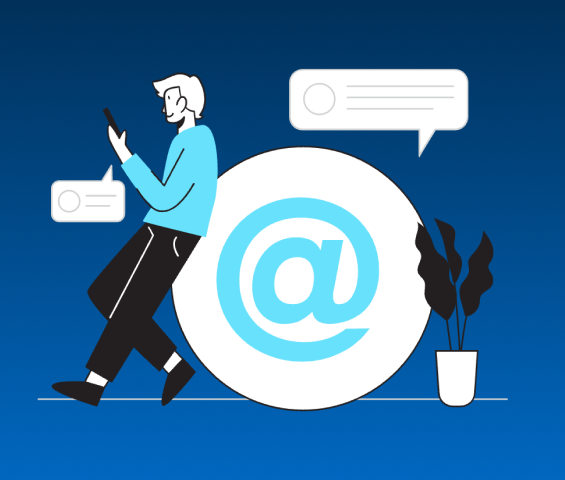How to Accept a Job Offer: Professional Guide & Templates
Accept a job offer in 6 steps
Express gratitude within 24 hours
Provide verbal acceptance
Send formal email
Review contract details
Sign and return documentation
Plan your transition
Accepting a job offer is a pivotal moment in your professional journey. While 76% of candidates respond to job offers within 3 days, understanding how to accept professionally can significantly impact your career trajectory and initial impression.
Quick Facts
Average response time expected: 24-48 hours
Written acceptance required: 94% of companies
Offer withdrawal rate due to poor communication: 8%
Digital acceptance becoming standard: 67% of Fortune 500 companies
Whether you're accepting your dream position at a startup or transitioning into a corporate role, this comprehensive guide ensures you handle the acceptance process with confidence and professionalism.
Understanding Your Offer Package
The first step in accepting your job offer is thoroughly reviewing the complete package. Most candidates rush this critical phase, yet it affects your entire employment experience. Take time to understand each component before proceeding with your acceptance.
Compensation Structure
Your compensation package likely extends beyond base salary. Review all financial elements, including bonus structures, equity grants, and commission frameworks. Pay special attention to payment schedules and any performance-based incentives that affect your total compensation.
Benefits Overview
Modern benefits packages are increasingly complex and valuable. Confirm your healthcare coverage initiation date, retirement contribution details, and paid time off policies. Look for additional benefits like professional development allowances or wellness programs that may influence your decision.
Key benefits to verify:
Healthcare and dental coverage start dates
401(k) or retirement plan matching percentages
Flexible spending account options
Remote work stipends
Professional certification reimbursements
Critical Timeline Factors
Most organizations expect a response within a specific timeframe. Here's a standard acceptance timeline:
24 hours: Initial verbal acceptance 48 hours: Written acceptance email 3-5 business days: Signed documentation return
Professional Acceptance Process
Verbal Acceptance
Your verbal acceptance sets the tone for your employment relationship. Express genuine enthusiasm while maintaining professionalism. A strong verbal acceptance includes appreciation, clear confirmation, and questions about next steps.
Sample verbal acceptance: "Thank you for offering me the Senior Developer position. I'm excited to accept and join the team at [Company Name]. Could you outline the next steps in the process?"
Written Confirmation
Your written acceptance formalizes your commitment. This document becomes part of your employment record, so clarity and professionalism are essential. Keep your message concise but comprehensive.
Digital Documentation Process
The modern job acceptance process increasingly relies on digital platforms and electronic signatures. Understanding this process ensures smooth documentation handling and maintains professional standards.
Electronic Signature Requirements
Most companies use platforms like DocuSign or Adobe Sign for offer documentation. Your electronic signature carries the same legal weight as a physical signature. Ensure all details match your offer letter before signing, including compensation, title, and start date.
Important Documentation Checklist
Key documents typically requiring digital acceptance:
Employment contract
Confidentiality agreements
Code of conduct
Benefits enrollment forms
Direct deposit authorization
Post-Acceptance Steps
Current Employment Transition
After accepting your new position, managing your departure from your current role becomes critical. Draft a professional resignation letter and schedule a meeting with your supervisor. Maintain positive relationships as you transition – your professional network remains valuable.
Pre-Start Preparation
The period between acceptance and your start date is crucial for preparation. Focus on these key areas:Professional Development
Research your new company's recent projects
Review relevant industry trends
Refresh critical skills for your role
Documentation Organization Create a folder containing:
Signed offer letter
Employment contract
Benefit selections
Required identification documents
Professional certifications
Timeline Management
Develop a clear transition timeline:
Submit resignation to current employer
Complete current projects or prepare handover documents
Schedule exit interviews
Gather necessary documentation for new role
Plan first-day logistics
Special Circumstances
Remote Position Acceptance
Remote job offers require additional consideration of:Digital Infrastructure Confirm specifics about:
Equipment provision
Software access
Home office requirements
Virtual onboarding schedule
International Job Offers
When accepting international positions, pay special attention to:Cultural Considerations Understanding local business practices and communication styles remains crucial for international roles. Review time zone requirements and travel expectations thoroughly.
Legal Considerations
Understanding the legal aspects of your job acceptance protects your interests and ensures compliance. While employment contracts vary by jurisdiction and industry, certain elements require careful attention.
Contract Review Essentials
Never sign an employment contract without thoroughly reviewing these critical components:Employment Terms
Duration of employment
Probationary period details
Performance expectations
Termination conditions
Restrictive Clauses Pay particular attention to:
Non-compete agreements
Intellectual property rights
Confidentiality requirements
Outside work restrictions
Frequently Asked Questions
Timeline Questions
Q: How long do I have to accept a job offer? A: Standard acceptance windows range from 24 hours to one week. Best practice is to respond within 24-48 hours, even if just to acknowledge receipt and request more time.Q: Can I accept a job offer verbally? A: While verbal acceptance is common, always follow up with written confirmation. Verbal agreements may be legally binding but lack clear documentation.
Negotiation Questions
Q: Can I negotiate after accepting an offer? A: Negotiation should occur before formal acceptance. Attempting to negotiate after acceptance can damage professional relationships and potentially void the offer.
Documentation Questions
Q: What happens if the written offer differs from verbal discussions? A: Immediately address any discrepancies with your hiring manager or HR contact before signing. Document all communications regarding the differences.
Professional Templates
Job Acceptance Email Template
Subject: Job Offer Acceptance - [Your Name] - [Position Title]
Dear [Hiring Manager's Name],
I am writing to formally accept the position of [Job Title] at [Company Name]. Thank you for offering me this opportunity.
As discussed, I understand that I will be starting on [Start Date] with an annual salary of [Amount], plus [mention any other benefits specifically discussed].
I am excited to join the team and contribute to [Company Name]'s continued success. Please let me know if you need any additional information from me before my start date.
Best regards, [Your Name] [Contact Information]
Conclusion: Next Steps After Acceptance
Successfully accepting a job offer marks the beginning of your new professional chapter. Here's how to maintain momentum and prepare for your transition.
Immediate Actions
The first 24-48 hours after acceptance are crucial:
Save all correspondence
Calendar important dates
Begin gathering required documents
Initiate background check processes (if required)
Transition Period Best Practices
Your professional handling of the transition period sets the tone for your new role. Focus on maintaining positive relationships while preparing for your new position.
Current Role Wrap-Up
Use a Job Tracker to document your current responsibilities and projects thoroughly, ensuring a smooth handover process. This demonstrates professionalism and protects your reputation in your industry. Create clear handover documentation and maintain positive relationships with current colleagues.
Additional Resources
Professional Networks
Connect with your new company and colleagues on LinkedIn, following appropriate professional networking protocols. This helps you stay informed about company news and begin understanding the corporate culture.
Industry Preparation
Stay current with industry trends and developments specific to your new role:
Follow company social media
Read recent press releases
Review company products or services
Study competitor landscapes
Success Indicators
Your job acceptance process is successful when:
All documentation is properly executed
Start date and expectations are clearly confirmed
Current employer transition is professionally managed
New role preparation is actively underway
Final Checklist
Before considering your job acceptance complete, verify:
✓ Written acceptance sent and acknowledged ✓ All contract documents signed ✓ Benefits selections completed ✓ Start date confirmed in writing ✓ Required documentation submitted ✓ Current role resignation handled professionally
Related Articles
3 min read
Jan 26, 2025

What Are Your Interview Odds for 1-10 Applications?
Boost job application success with data-backed strategies: industry trends, ATS tips, timing, and tailored approaches for better interview chances.

